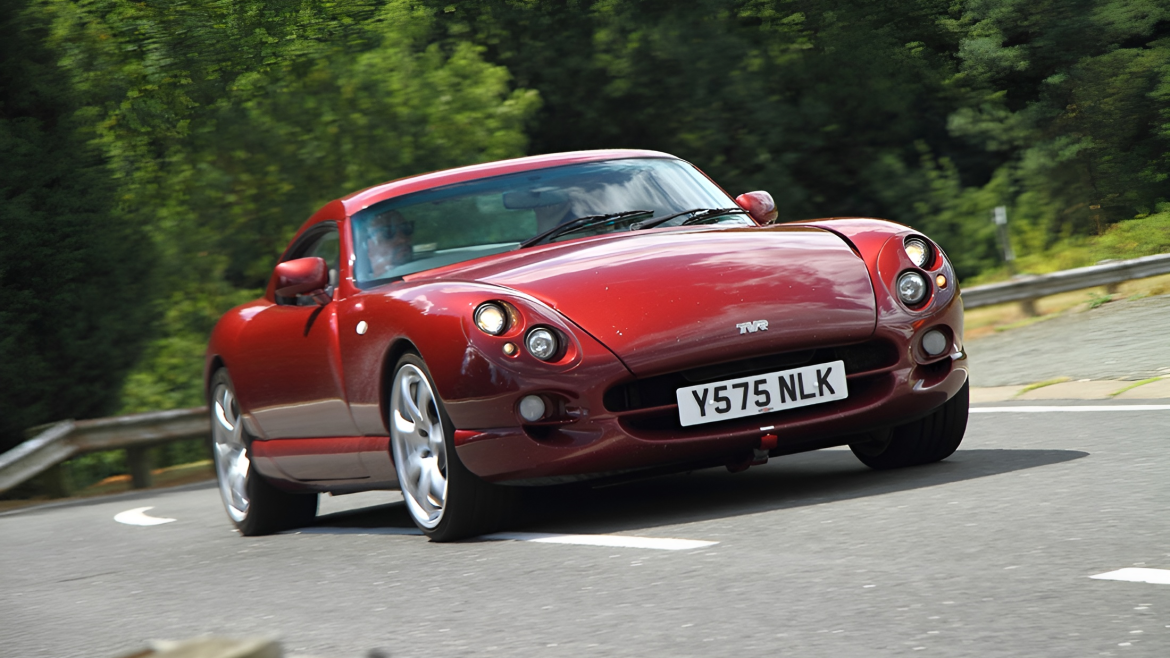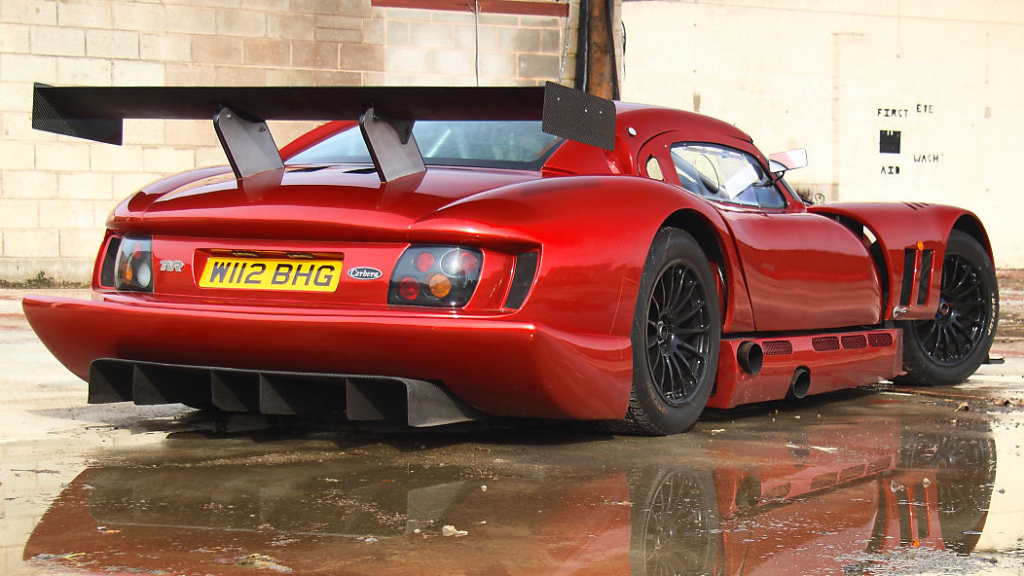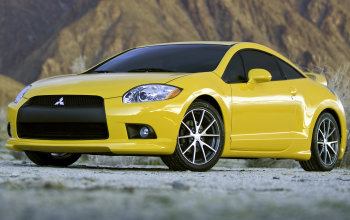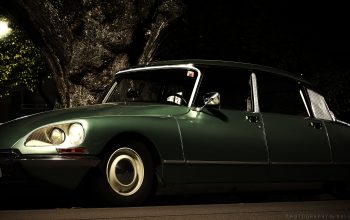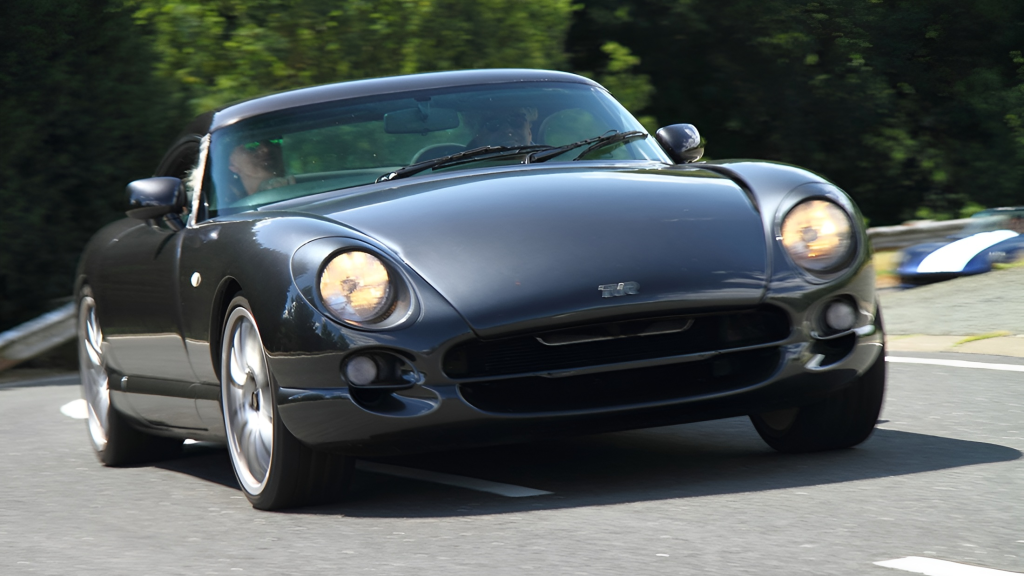
The spaceship TVR that ascended the brand to the stars and beyond.
As we conclude the year 2022 with stunning announcements of great additions to the motoring industry, it is time for another review on an underrated sports coupe, and what would be a better pick than a classic TVR? It is the big, menacing coupe that established TVR’s reputation in the late 90’s, the Cerbera. Named after the three-headed Greek mythology character, the guardian of the underworld Cerberus, the Cerbera offered just as much brutal aggression as the character it is named after. Without further ado, let us take a deeper look into this underrated and timeless member of the TVR family.
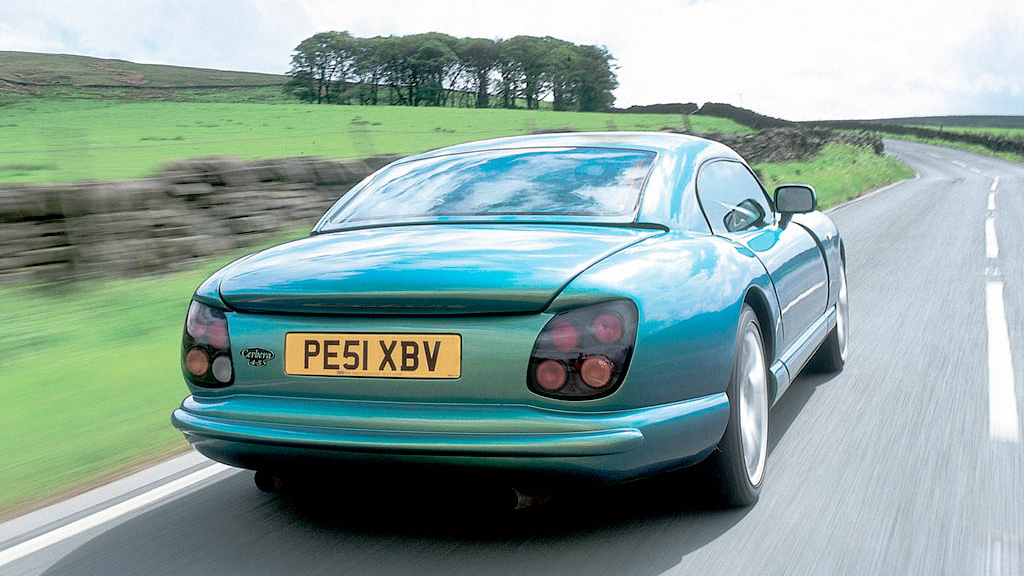
The Cerbera’s design and production goes all the way back to 1993, on the drawing board, or to be more precise, the foam blocks of TVR designers, who wanted to create a grand tourer that is smooth edged and completely revolutionary following TVR’s wedge design language era. The finished design made it to the 1993 London Motor Show and received critical acclaim from the motoring world. The design caused such a stir that by the time the production of the Cerbera began in 1996, 276 of them were already ordered by the private customers. No other TVR has caused such a hype before, and it is easy to see why. The Cerbera was the one step forward for TVR, as it was their first model that used TVR’s own straight-6 ”Speed Six” and 4.2 or 4.5 liter ”Speed Eight” V8 engines rather than the old Rover based engines used by the previous models. These engines would later be used on the newer models like Tamora, Tuscan and Sagaris as well.
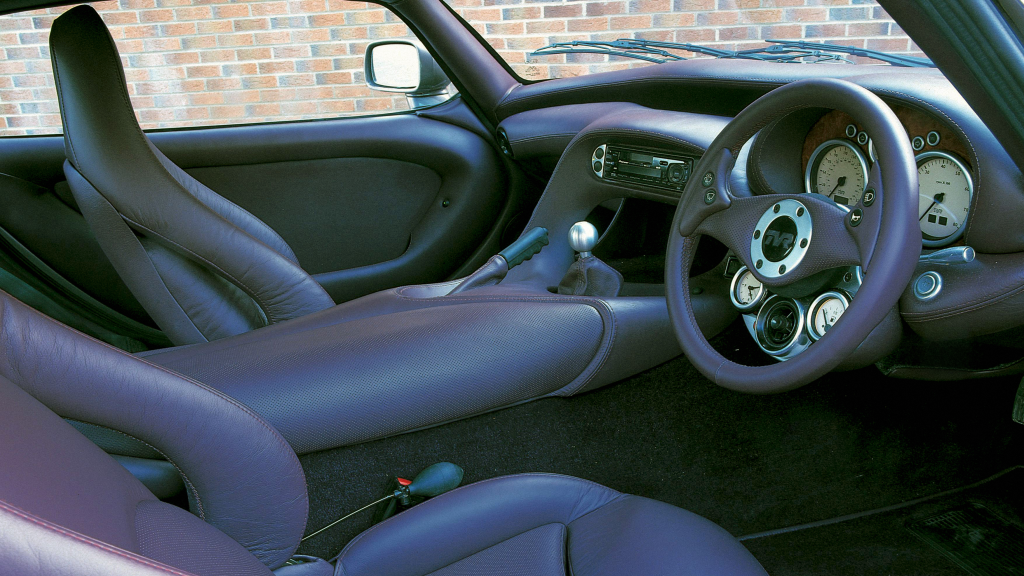
Cerbera shares a similar design to its smaller counterpart Chimaera, but advances it further with a longer, GT car look with 2+2 seat arrangement, adding an unexpected twist of practicality and creating a market of ”a sports car a family man can use”. The futuristic streamlined design is completed with the unusual ”no door handle” design TVR kept using up to Sagaris. To get in the car, a button beneath the side mirrors are used instead. The avant-garde design is continued in the driver-focused interior featuring a spaceship like dashboard with dials and a vent under TVR’s iconic two-spoke steering wheel. The adjustable front seats provide a much bigger leg room than other 2+2 coupes, and Cerbera’s long swooping doors makes the rear seat accessibility easier. Exterior wise, Cerbera had a facelift over its production period, with the later models after 2000 receiving a more modern look with body-integrated sets of headlights, mirroring the design language of TVR’s newer models like the Tuscan and Tamora.
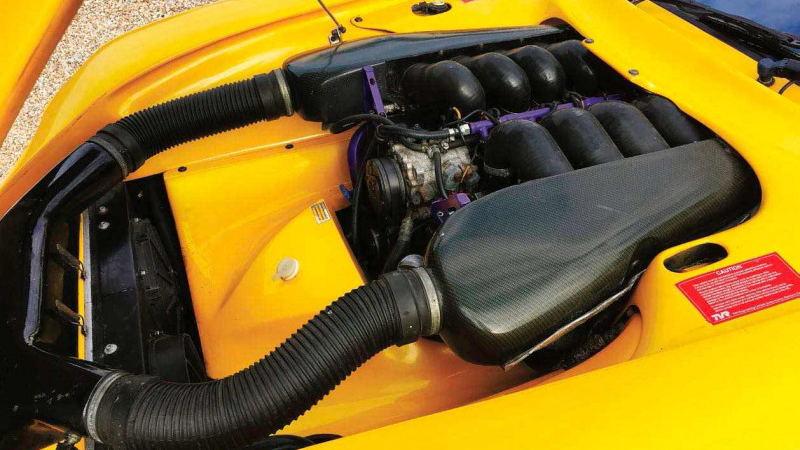
The changes and improvements were not just cosmetic, though. Cerbera’s fiberglass bodywork got only lighter and lighter throughout its production period. This included lighter doors, bootlid, roofline and rims, dropping the final kerb weight of the later-model 4.5 version to just 1.060 kg (2336 lbs), which is 60 kilograms lighter than the first Speed Six model. The Speed Six and Speed Eight powerplants also received upgrades throughout their production. Made out of an alloy block, the engine weighed only 121 kg and was lighter than F1’s V8 and F3000 engines combined. TVR did not shy away from perfecting the engine quality, therefore, forged rods and pistons as well as camshafts made out of solid billet steel resulted in a reliable and durable power plant that TVR was so confident of, so much that they gave forty of the powertrains to TVR Tuscan Challenge racing series to demonstrate their power. With better suspension and brakes over its timespan, Cerbera stayed in tune with the growing competition of lightweight supercars emerging in the early 2000’s.
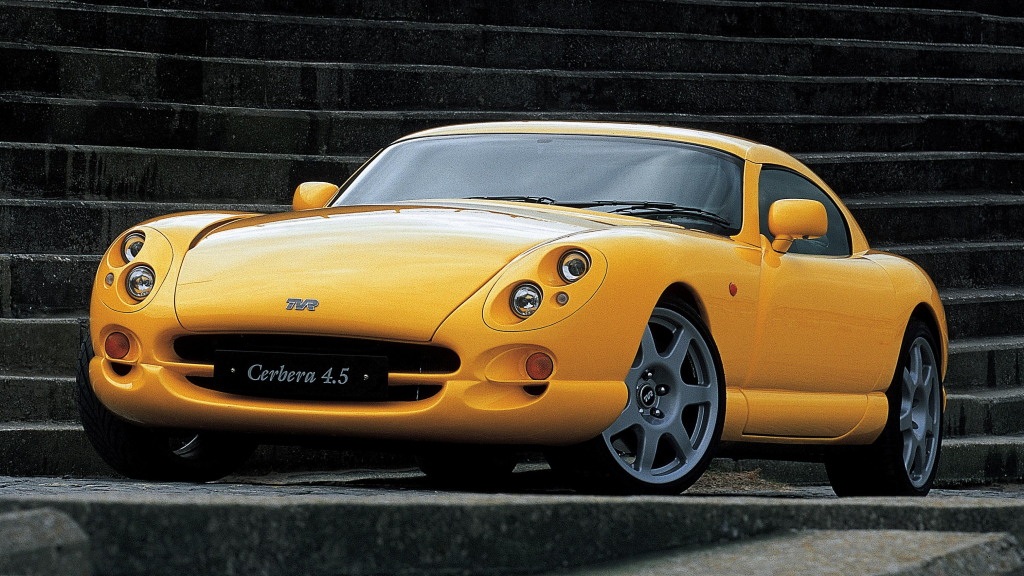
The Performance
Performance wise, the Cerbera was acclaimed for its lightweight and reliable yet powerful powertrains. The lowest straight-six ”Speed Six” engines produced 350 HP and 447 NM of torque which made it able to accelerate from 0 to 60 in 4.4 seconds all the way to its top speed of 273 km/h (170 mph). This engine is known to be the most reliable amongst the Cerbera owners, and it’s reported to be already quick as a TVR can be thanks to the car’s light body. However, TVR thought that it could just go further, so, the ”Speed Eight” AJP V8 engines are an option if the Speed Six doesn’t cut the mustard for you. The 4.2 V8 produces 360 HP and 433 NM, with a 0 to 60 time of 4.2 seconds and 290 km/h of top speed (180 mph). The top of the range 4.5 V8, however, takes it to the space as it produces 420 HP and 515 NM and has a top speed of 313 km/h (195 mph). All the models are mated to a 6-speed manual transmission. With a 1.060 kg of kerb weight and 420 HP, the Cerbera 4.5 is among the fastest and most dangerous lightweight British sports cars that came out in the early 2000’s.
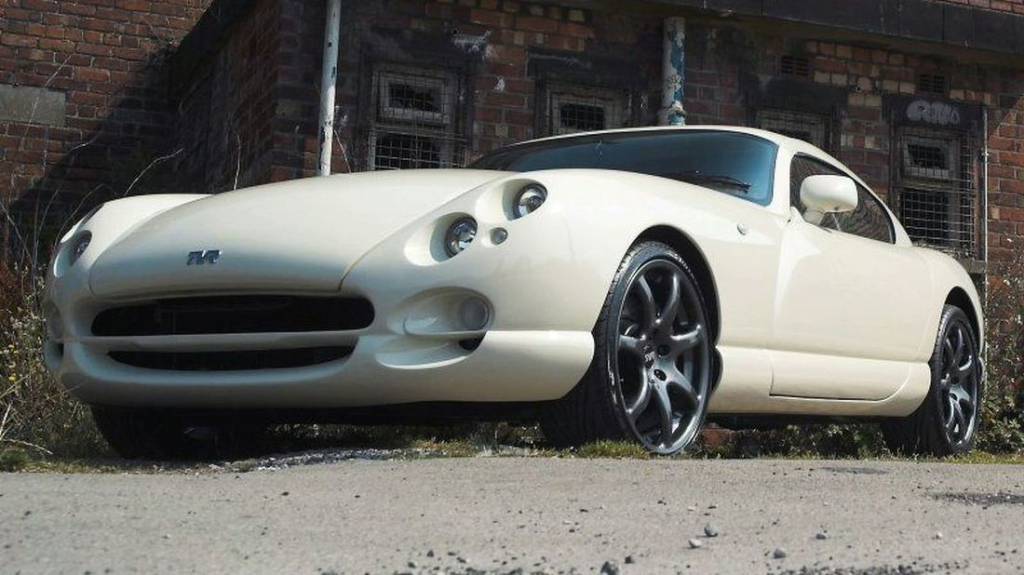
The production of the Cerbera continued until 2003. However, the design was brought back for only one unit in 2006 by TVR’s past owner Nikolai Smolenski to pay a tribute to the “beautiful but brutish bygone British sports car.” Dubbed ”The Last Cerbera”, the final car had a pepper white paintjob with Prussian blue interior. The car was sold to the highest bidder, which was £55,500.
Cerbera was the step forward for TVR. Even though the brand barely exists today with their Griffith model, the Cerbera revolutionized their design language and kept them on the market and the rear view mirrors of the big names like Lamborghini or Ferrari. If you want to buy a Cerbera (like yours truly), it is advised to go for the later models of Speed Six trim with the straight-6 engine. The 350 HP engine is already plentiful both noise and power wise according to their owners, and the one that’s easiest to look after compared to the V8 versions. However, even the AJP V8 engines are known to be more reliable and easier to maintain compared to other V8’s on the market, so if you want to settle on a 4.2 or 4.5, you can be more confident on your purchase, just make sure to spare some more green after your buy. However, the owners claim that it is worth it to listen to the engine noises of both straight-6 and V8 models daily. Be advised that the TVR models lack any airbags, so all of the models, not just Cerbera, should be driven with extra attention.
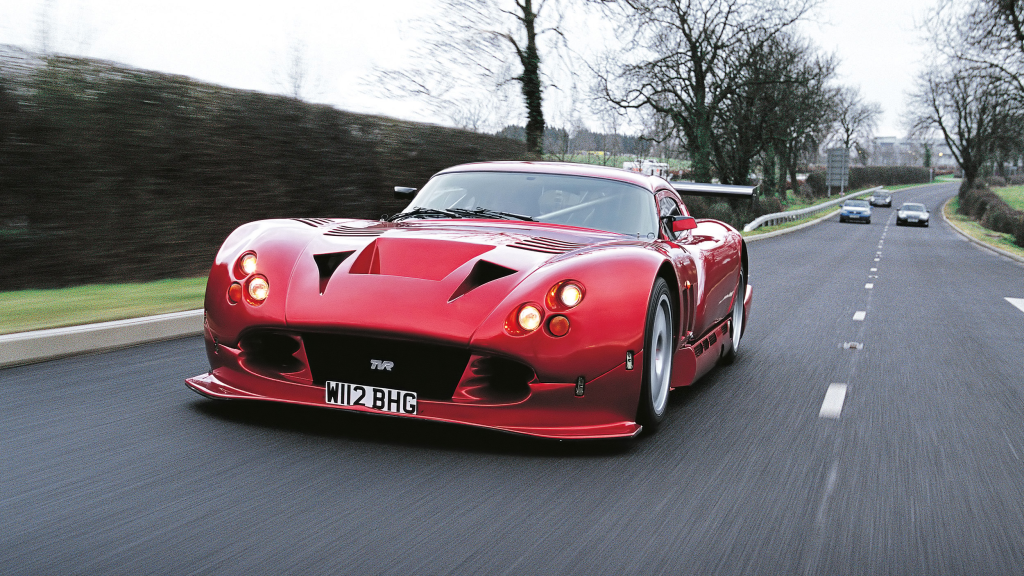
The Cerbera Speed 12
Because there is always someone who thinks absolute power and lightness… is not enough. That is how the Monster of Britain, the Cerbera Speed 12 was born. First appeared with their initial design and ”Project 7/12” name in 1996 Birmingham Motor Show, the Speed 12 attracted more crowd than any other car in the show. The number ”7” in the name referred to the 7.7 liter engine, and the 12 for the number of cylinders of the engine. This engine was claimed to produce 800 HP, and be faster than the McLaren F1, the fastest car of the time. This V12 engine was made by mating two AJP6 straight-six engines on one crankshaft, and was made out of steel. TVR initially wanted the Speed 12 to race in 24 Hours of Le Mans and British GT Championship in 1998, but suddenly changing regulations rendered it impossible for TVR to race their newly built behemoth.
For Wheeler, there was only one thing for it, to built it as a road car, and make it the fastest and most powerful road car ever built. The true numbers V12 engine produced has never been fully revealed, but the racing version would produce 675 HP according to race regulations. Without these regulations on the streets, though, Wheeler claims in an interview that they tried to record the power on a dyno which gave the result of 1,000 HP, but the test broke the input shaft. Then, each bank was tested individually, which resulted in 480 HP per bank, and a combined power of 960 HP. According to their figures, the car accelerated from 0 to 60 in 2.9 seconds and could go up to 386 km/h (240 mph), up to par with McLaren’s F1. However, Peter Wheeler himself tested the car with a trip to home and back, and concluded that the car was simply unusable on the road, as it was simply too powerful in his opinion. Well, with a 1,000 kg of kerb weight and almost 1,000 HP of power, you simply can’t expect it to drive like a Honda City, for sure. Production plans were cancelled, and only one was sold through an advert in Auto Trader, with a license plate of ”W112 BHG” (see above) which had a reduced power output of 840 HP. To buy the car, however, the customer would meet personally with Peter Wheeler to make him sure that you are good enough for the one and only Speed 12 on the road. The car is now on display at Lakeland Motor Museum, Backbarrow, Cumbria.
Thank you to all of our readers to staying with us in this illustrious year of 2022! It has been a huge journey for us to improve on our work and hoping to see you in an even better year of 2023!

